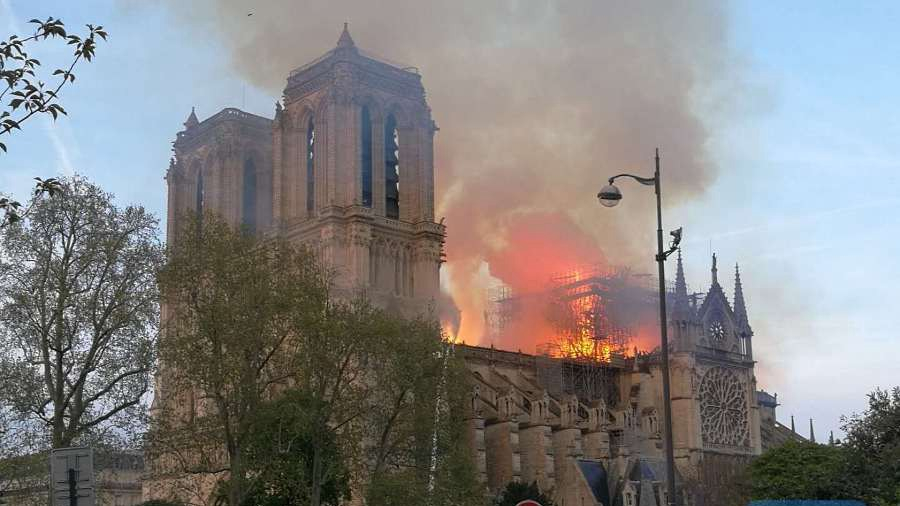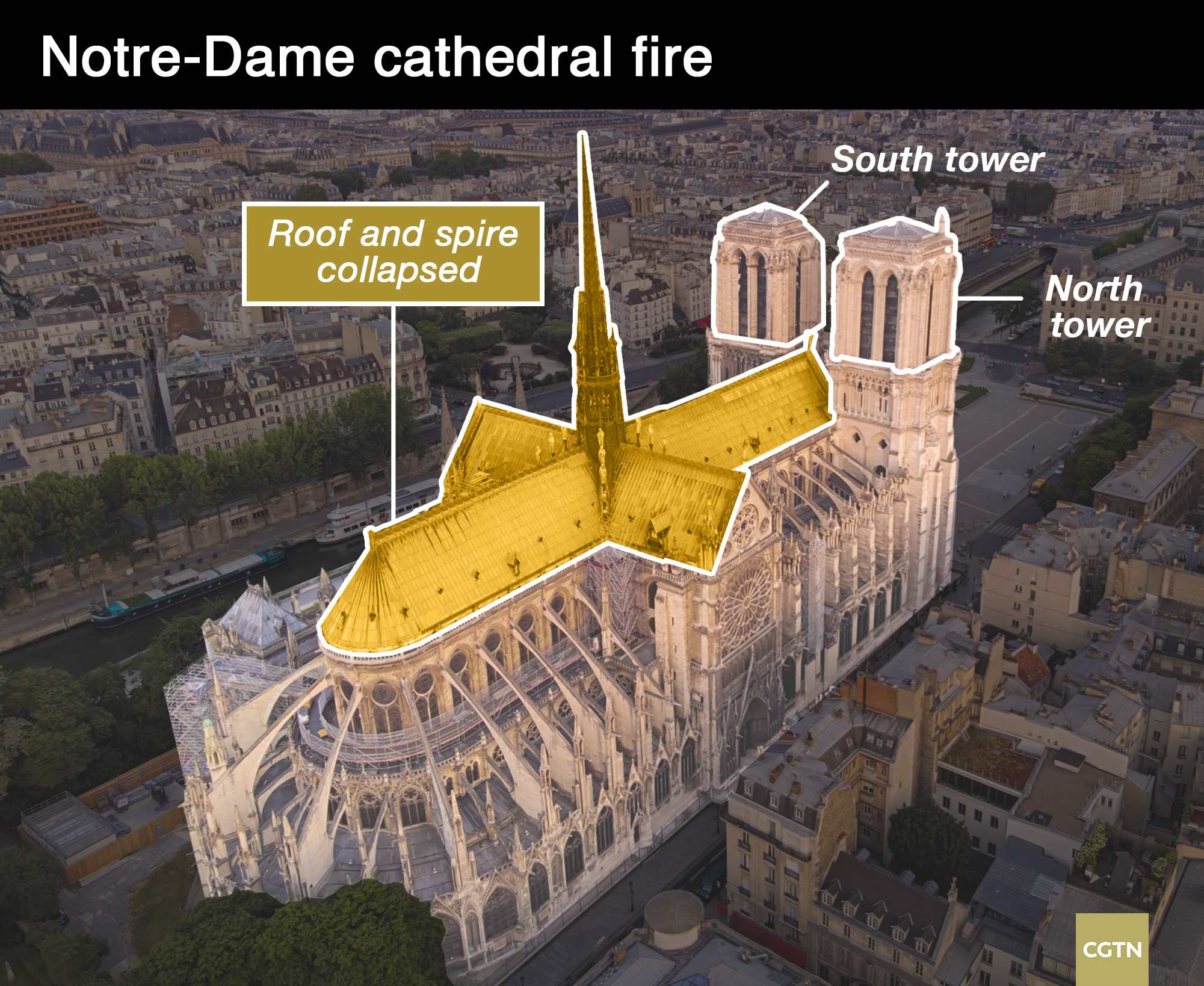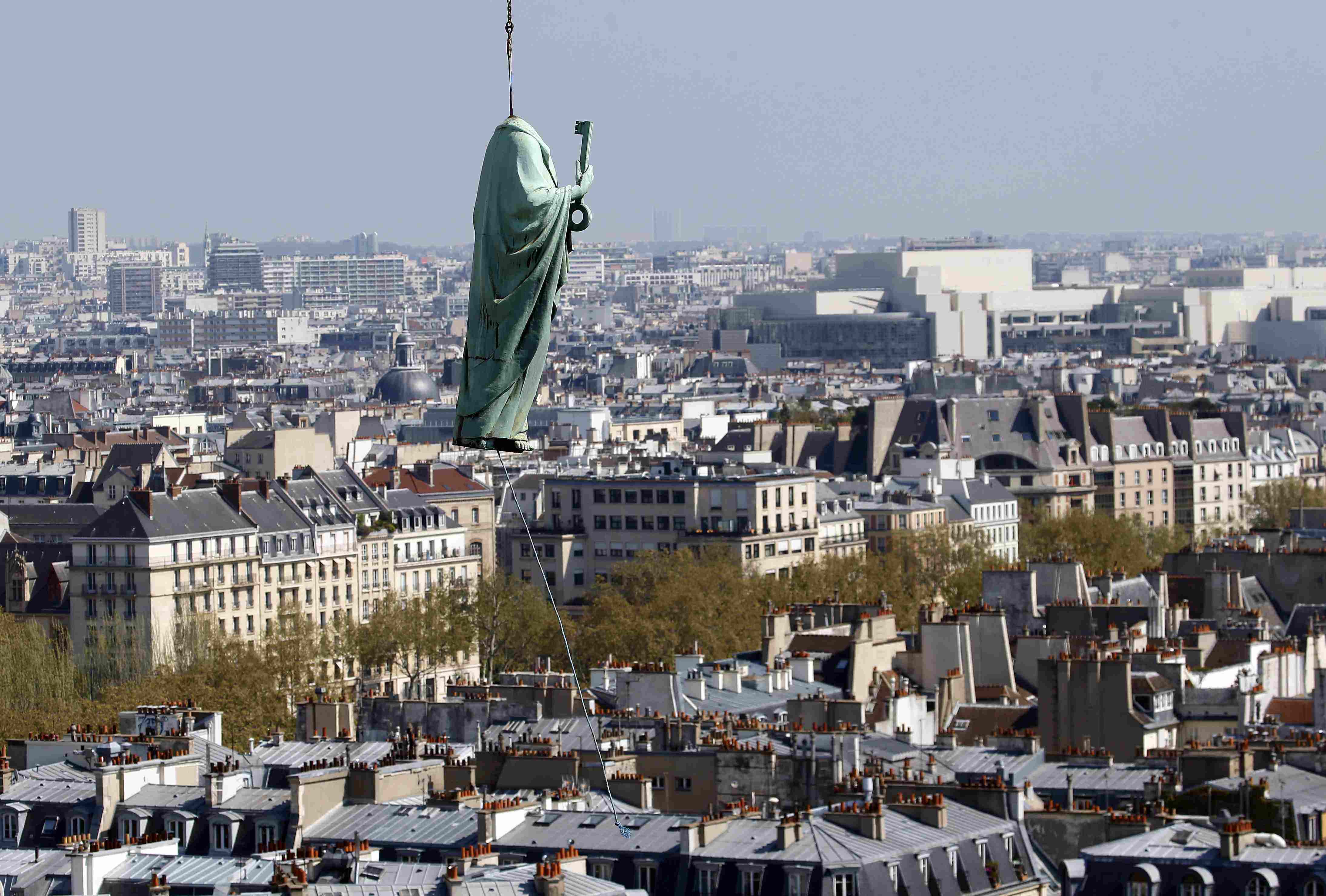
Opinion
12:17, 16-Apr-2019
Humanity must act now to preserve its heritage
Tom Fowdy

Editor's Note: Tom Fowdy is a British political and international relations analyst and a graduate of Durham and Oxford universities. He writes on topics pertaining to China, the DPRK, Britain, and the United States. The article reflects the author's opinion, and not necessarily the views of CGTN.
On Monday evening the world stood in horror as the renowned Notre-Dame Cathedral was engulfed in a massive fire bringing about significant damage to the structure. Although the heroic efforts of fire-fighting teams were able to salvage the majority of the nearly 900-year-old building, witnesses swept as its spire came tumbling down.
Leading voices around the world have expressed their sorrow in the wake of the event, not least U.S. President Trump who publicly called for “flying water tanks” to be dropped on the cathedral, later earning a subtle rebuke from French fire-fighters.
Whilst accidents happen and the cause of this tragic event is not yet known, nevertheless, there are rounded political implications that should be considered by authorities all around the world in the view of historic sites which form a collective part of humanity's heritage.
The effects of urban pollution are real and must be addressed. A renewed international effort must be made to recognize and address this problem, whilst placing strong political priority on securing the necessary resources and funds to preserve historical sites around the world.
The fire in Paris teaches us that no longer can places like this be taken for granted or assumed to be someone else's responsibility. Humanity must act to preserve its history and reassess the sustainability of its urban environments.
Paris is envisioned around the world as a city of dreams. So deeply embalmed in the imagery of romanticism, beauty and leading style, we know for it for its powerful influence on global culture and fashion. It is no surprise on that note that France is amongst the most visited country on Earth by tourists.

CGTN Photo
CGTN Photo
There is so much to revere. Yet, beyond the imagery so entrenched in our imaginations and classical films, the reality of the place is quite different. To put it lightly, owing to the effects of a bulging population and a never growing urban sprawl, contemporary Paris is unhygienic and polluted.
Far from the romanticized streets and beautiful cafes, images can reveal streets lined with mountains of trash. Whilst, of course, every major city in the world faces challenges like this, for Europe, Paris has been in a category of its own.
How does this relate to a fire in a cathedral? The inevitable consequences of urban pollution take a very negative toll upon historical buildings. In recent years Notre-Dame Cathedral has shown signs of significant wear. Philippe Villeneuve, Architect-in-Chief of Historic Monuments in France, stated in 2017 that: “pollution was the biggest culprit” in undermining its condition.
Reportedly, exports noted up to 185 million U.S. dollars was needed urgently. Whilst the specific cause of the fire is unknown, it is evident that the increasing stress upon public authorities to adequately service the city of Paris played a paramount role in the outcome we face today. Pollution and environmental challenges are destroying human history.
The Notre-Dame Cathedral is not alone. Grand historical sites all over the world are reportedly under threat because of decaying environmental and urban conditions, as well as the subsequent public negligence to service them properly.

Some of the statues atop Paris' Notre-Dame Cathedral have been removed as part of the restoration project of the spire, April 11, 2019. / Reuters Photo
Some of the statues atop Paris' Notre-Dame Cathedral have been removed as part of the restoration project of the spire, April 11, 2019. / Reuters Photo
Examples include most of the historic sites in Rome, as well as the Taj Mahal in Agra, India. The context is the same, pollution is hurting the structures. It has been widely reported that the Taj Mahal's beautiful marble face is turning yellow and green because of air pollution.
Yet, in the context of India, with inadequate public resources and an economic growth trajectory which inevitably leads toward environmental degradation, what can be done? It is nevertheless, a worldwide problem.
The result of this disaster in Paris should be consequentially, a wake up to the world. Environmental degradation is not only hurting the world as a whole, but is hurting human history too. There must be a thorough, top-down and well organized approach to tackle address the environmental sustainability of urban areas, as well as a renewed bid to protect sites of significant historical heritage in the process.
Organizations such as the United Nations Educational, Scientific and Cultural Organization (UNESCO) must be given more priority, attention and funding by the international community. Countries must cooperate to protect and secure humanity's past for the benefit of generations in the future, save all will be lost.
As a whole, Notre-Dame Cathedral is now a painful lesson for the world to see if the status quo continues to persist in some areas of the world. There is no price that can match the grandeur, beauty and brilliance of such a structure and those like it around the world, if they were to be lost.
We should not just treat the fire as a tragic accident and brush it under the carpet, but as a serious political statement that we must act now.
(If you want to contribute and have specific expertise, please contact us at opinions@cgtn.com.)

SITEMAP
Copyright © 2018 CGTN. Beijing ICP prepared NO.16065310-3
Copyright © 2018 CGTN. Beijing ICP prepared NO.16065310-3